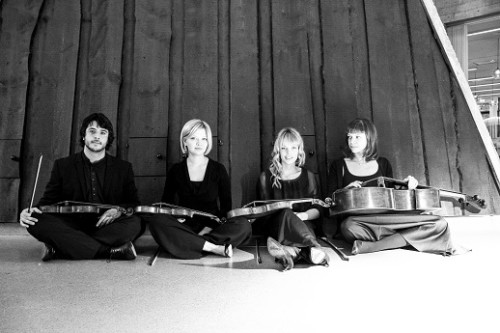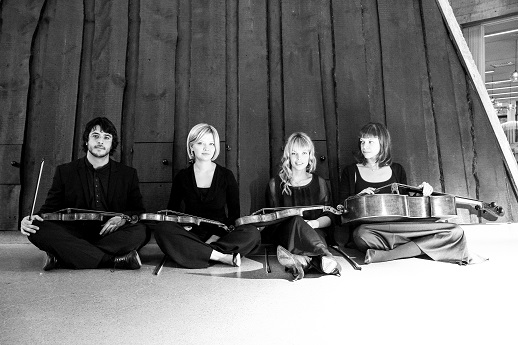 Switzerland Bach, Beethoven, Mendelssohn: Chiaroscuro Quartet (Alina Ibragimova & Pablo Hernán Benedí [violins], Emelie Hörnlund [viola], Claire Thirion [cello]), Kirche St. Peter, Zurich, 27.5.2018. (CCr)
Switzerland Bach, Beethoven, Mendelssohn: Chiaroscuro Quartet (Alina Ibragimova & Pablo Hernán Benedí [violins], Emelie Hörnlund [viola], Claire Thirion [cello]), Kirche St. Peter, Zurich, 27.5.2018. (CCr)

Bach – Contrapuncti I, III and IX from ‘The Art of the Fugue’, BWV 1080
Beethoven – String Quartet in G major, Op.18/2
Mendelssohn – String Quartet Nr.1 in E flat major, Op.12
A short-sleeved, relaxed Zurich public turned out in good numbers on Sunday night to hear the Chiaroscuro Quartet, prised for its use of period instruments, deliver three sections of Bach’s ‘Art of the Fugue’ as well as a quartet each by a young Beethoven and a young Mendelssohn. The audience left even cheerier than it arrived, apparently inspired by the élan of the music. The four musicians who delivered that élan would do well to show a tad more of it themselves.
The bad news: they opened with an unconvincing performance out of Bach’s ‘Fugue’. A plaintive, slow resonance held promise until it was sent off-balance by competing lines of counterpoint, particularly in Contrapunctus IX, that rarely seemed to play off each other and instead had the occasional tense air of four neighbouring soloists. Either Bach’s musical subject and his exponential exploration of it are ill-suited to a quartet, which must pay more care to the entire sound balance than a single keyboard would; or the players (and their instruments) produced a sound too sostenuto for the clarity that Bach’s exposition requires. The net result was a somewhat fuzzy, joyless exercise in capable playing.
The good news: the choice of Beethoven allowed the Chiaroscuro Quartet to sound like everything they weren’t in the piece before, and not just because of differences between the two compositions: the playing became gallant, crisper, coordinated, joyous. Legato passages, too, found lift. It was like hearing a different group perform. The repeats in the score were well exploited for nuances in effect, and Alina Ibragimova’s first violin came unleashed, improving in tone. This is a work that allows you contemplate who Beethoven became, and where he started. The early classical lightness and play of his mentor Haydn are everywhere in the first and fourth movements, but so are a few allusions to something far stormier. Fitting, then, that the Chiaroscuro Quartet takes its name from a Baroque effect in painting of contrasted darkness and light.
The evening’s third work, from Mendelssohn, was also fascinating as an early work of a famed composer, though for a different reason: its precocity. Mendelssohn was 18 when he wrote this quartet, during an early London sojourn and simultaneous to his curatorial work on Bach’s St. Matthew’s Passion, which helped spur a Bach revival. That a young person could write anything this confident is one thing; note that he did so two years after Beethoven’s death. That the piece could be so sweetly dramatic, evoking such plaintive loveliness across the instruments, is another. It is written out of longing, in love. There is a naked intensity with which Mendelssohn pushes pained melodic themes to the fore, but he relents, walks it back, returns in time to gentler harmonic climes.
With playing to match: there was much to enjoy here, from exquisite dynamics in the second movement (a darkly puckish ‘Canzonetta’ instead of a traditional adagio) to the straightforwardly elegiac in the brief third movement. The terrific final movement is in its own key, attacca and full of yolky tumult, and the violins enjoyed their best passages of the concert.
Casey Creel
For more about Chiaroscuro Quartet click here.
